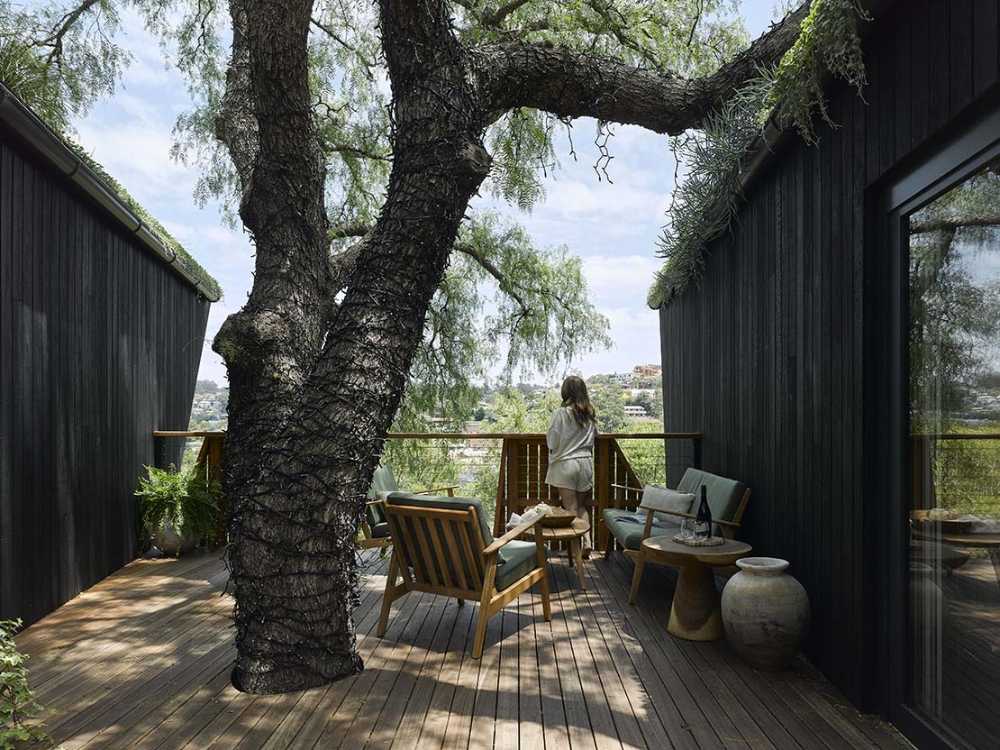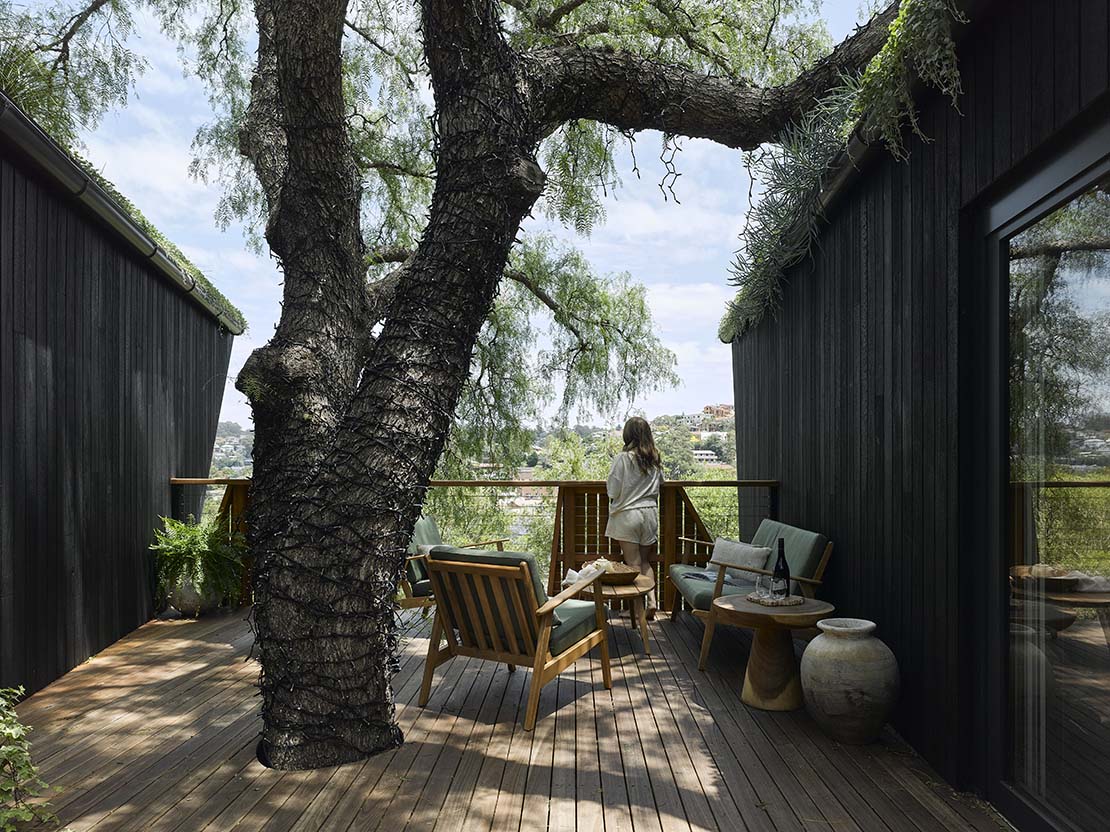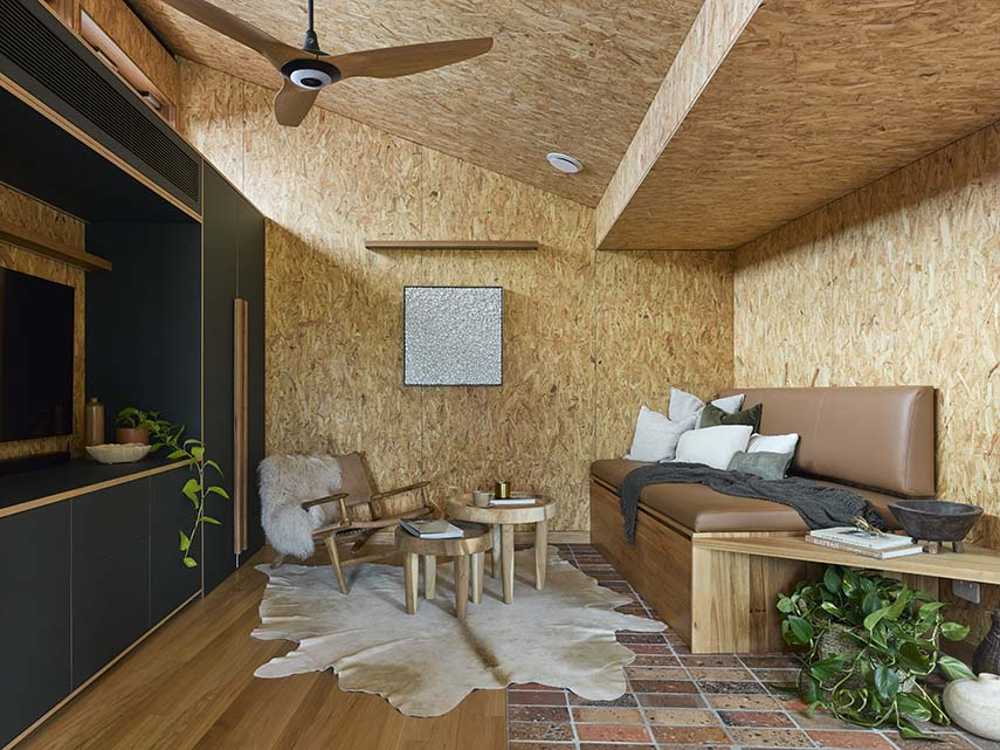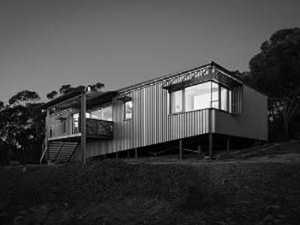The pre-existing house had an old and thermally inefficient brick exterior, while the internal layout worked perfectly for the young family of the owners. Therefore, the project by architect Alexander Symes involves updating the shell of the first house (new insulation where possible, a ventilated wooden façade, new skylights, and a surrounding pergola of solar panels) and creating an attractive secondary dwelling built around the nearly 60-year-old pepper tree in the backyard


Pepper Tree Passive House. A cozy and sustainable home office extension
Pepper Tree Passive House is a new sustainable dwelling built on the plot of a suburban home in Illawarra, Australia. Designed to nestle beneath the fronds of the pepper tree from which it takes its name, the dwelling is constructed according to Passive House standards, ensuring comfort all year round and consuming up to 90% less energy compared to a standard house
- #Oceania
- #Australia
- #Architectures
- #New construction
- #Building recovery
- #Residence
- #Villa
- #Wood
- #Architecture

The Pepper Tree Passive House was conceived to serve as the office for the growing family business during the day and a location for short-term stays at night. Each wing of the secondary dwelling hosts a green roof planted with endemic vegetation to regenerate the site's biodiversity despite the new extensive building footprint

With a palette of natural and raw materials, including extensive use of wood and endemic gardens, the relationship between the two houses and the environment in which they are located is strengthened. Throughout the project, reclaimed and recycled materials are used, reducing its environmental impact without sacrificing quality. Adherence to the Passive House standard and the inclusion of a 12 kW photovoltaic panel system mean that the overall energy consumption is 14% of that of a comparably sized house, significantly reducing both economic and environmental costs for the family

Gallery
Photo credits
Top image, content and gallery images: Barton Taylor
Designers credits
Paiano Design – Interior Design
Northrop – Structural Engineer
Grant Clement – Landscape Architect
Companies credits
Souter Built - Builder












